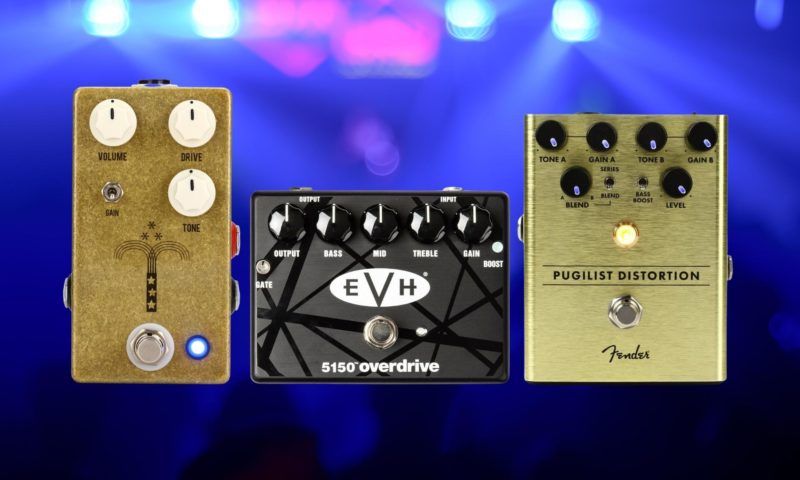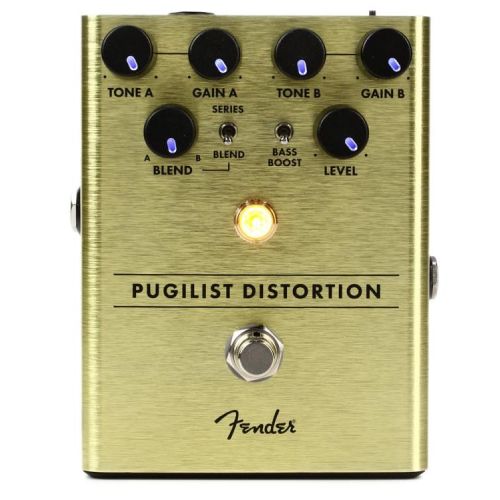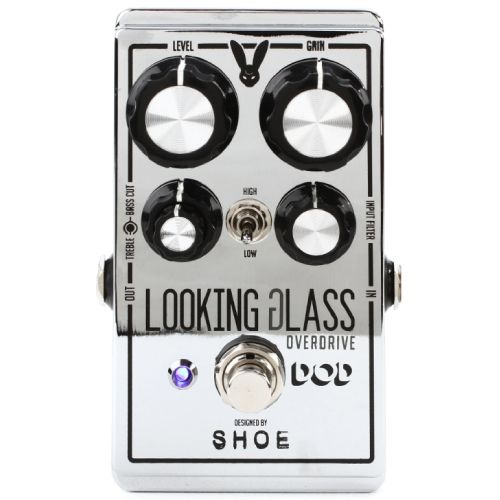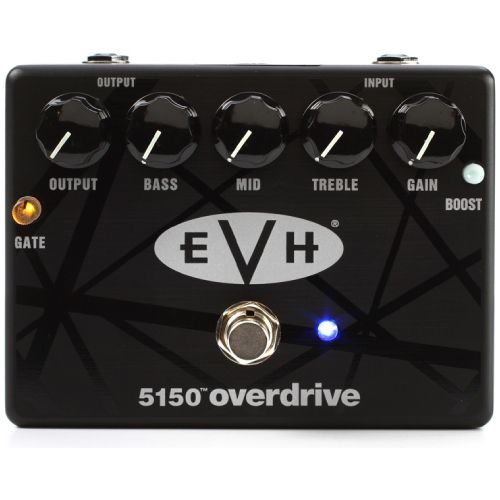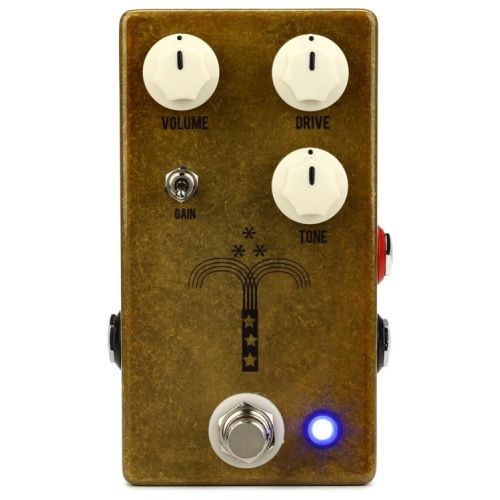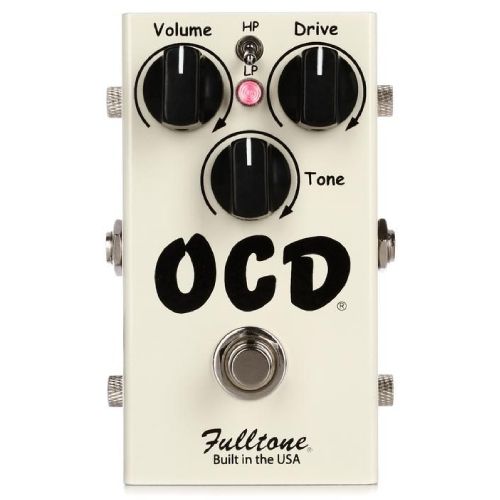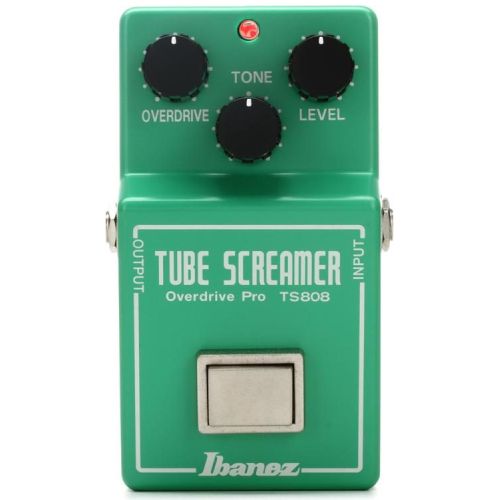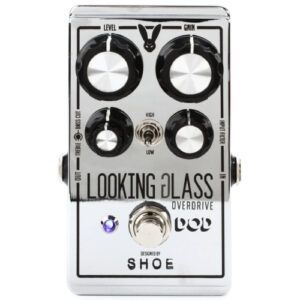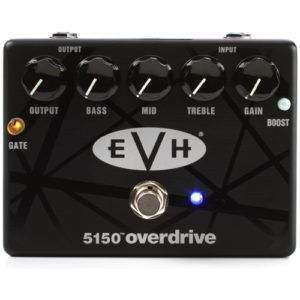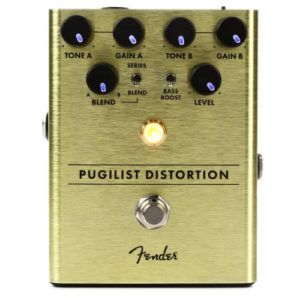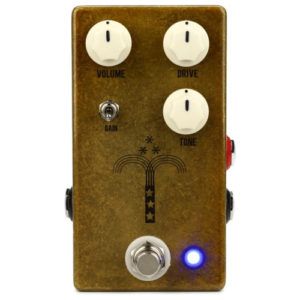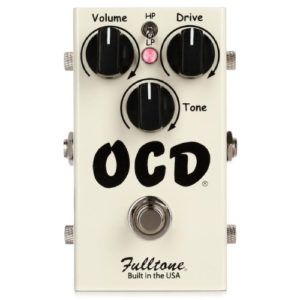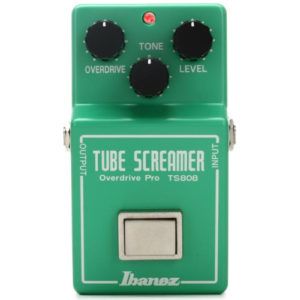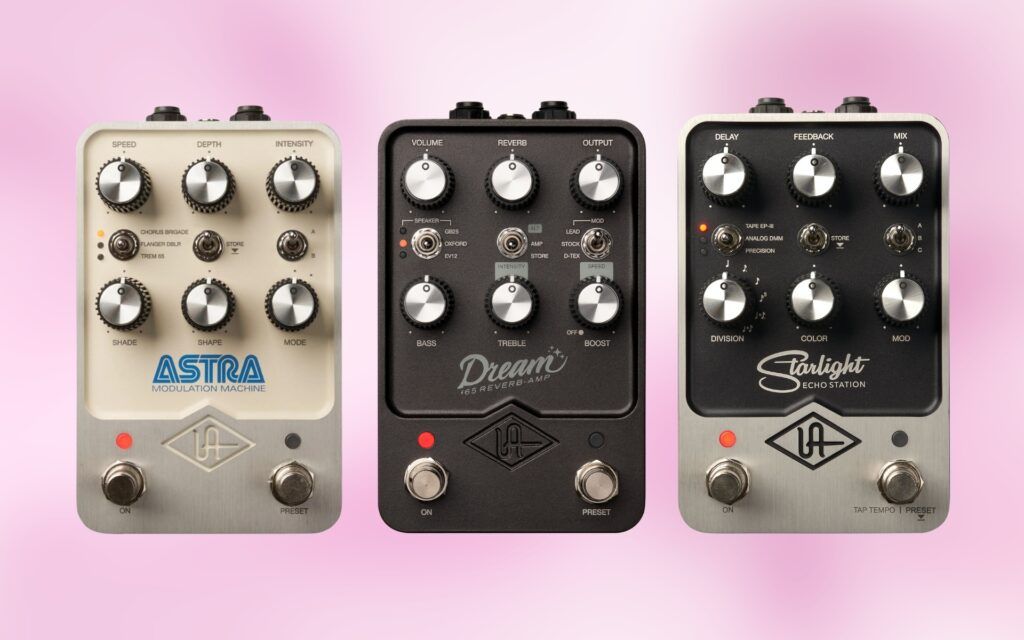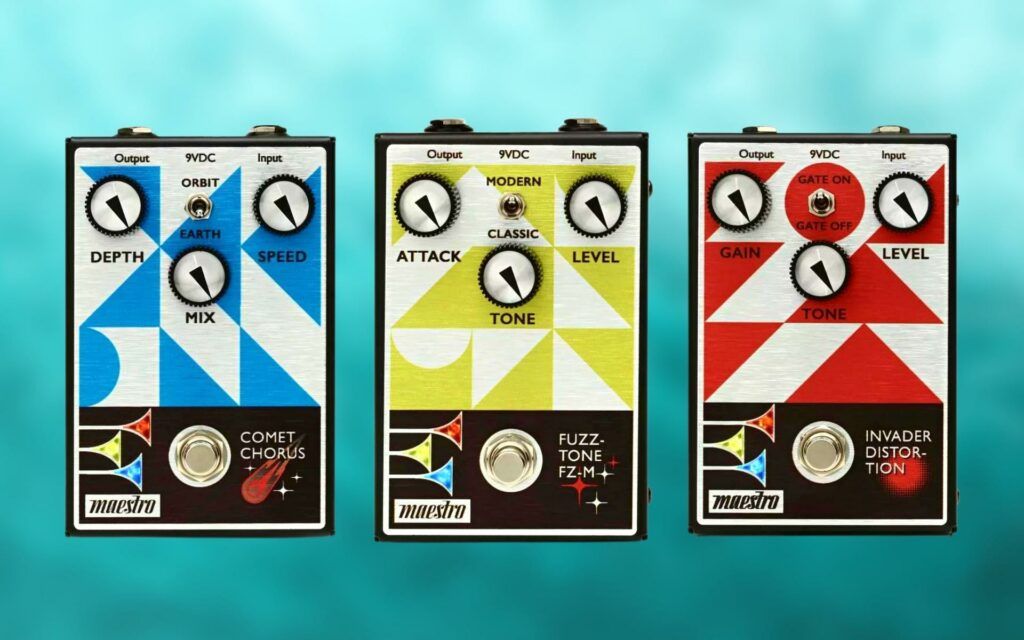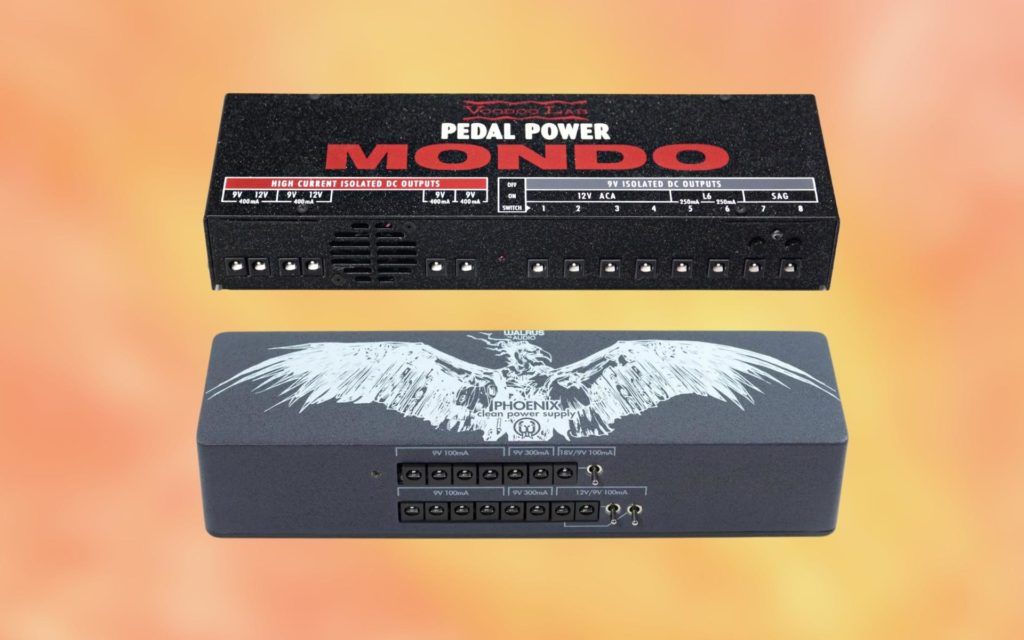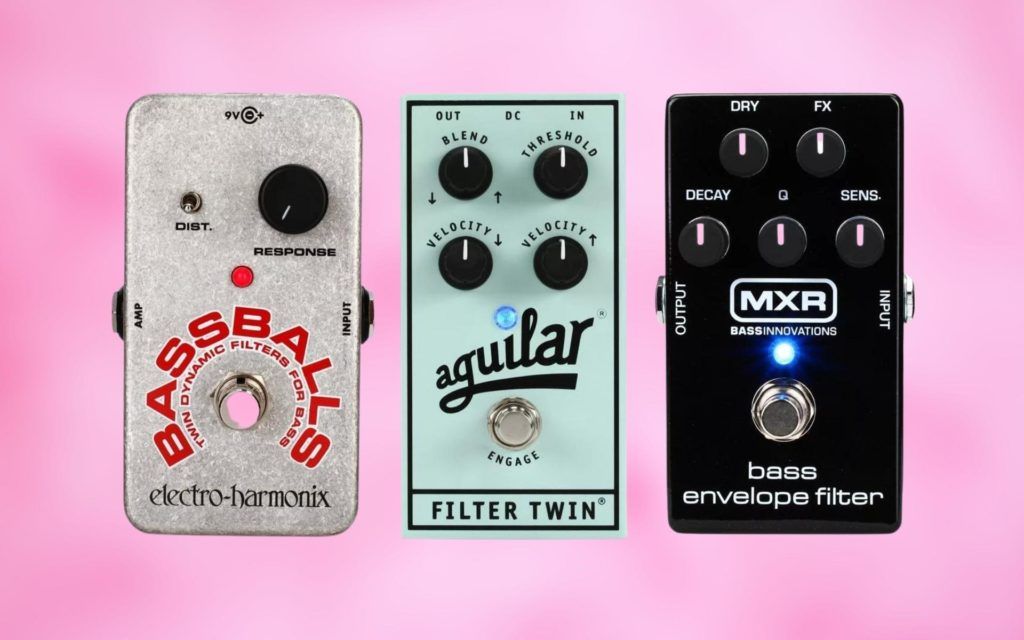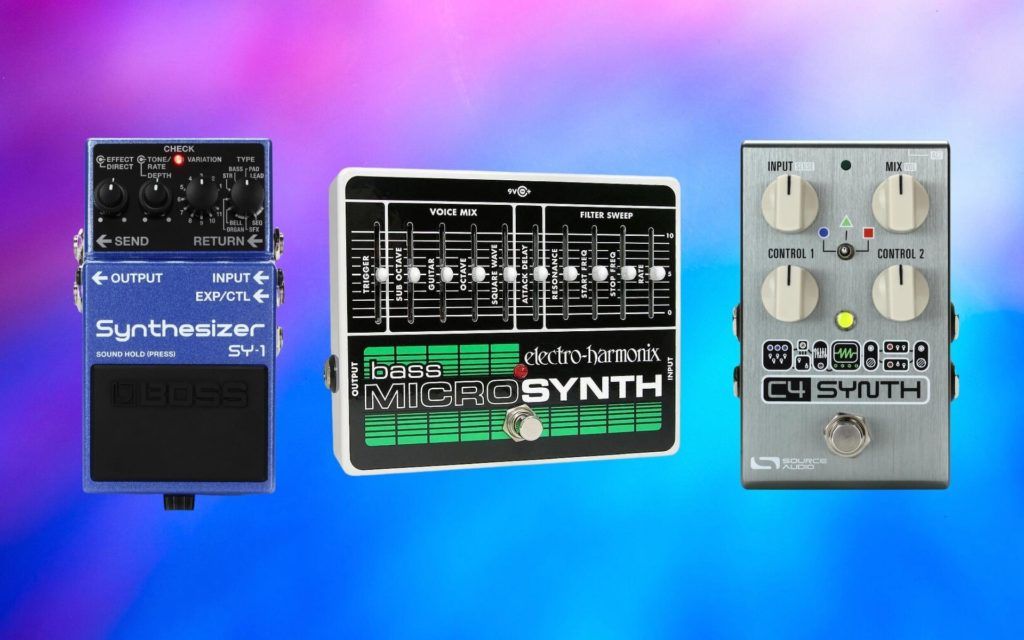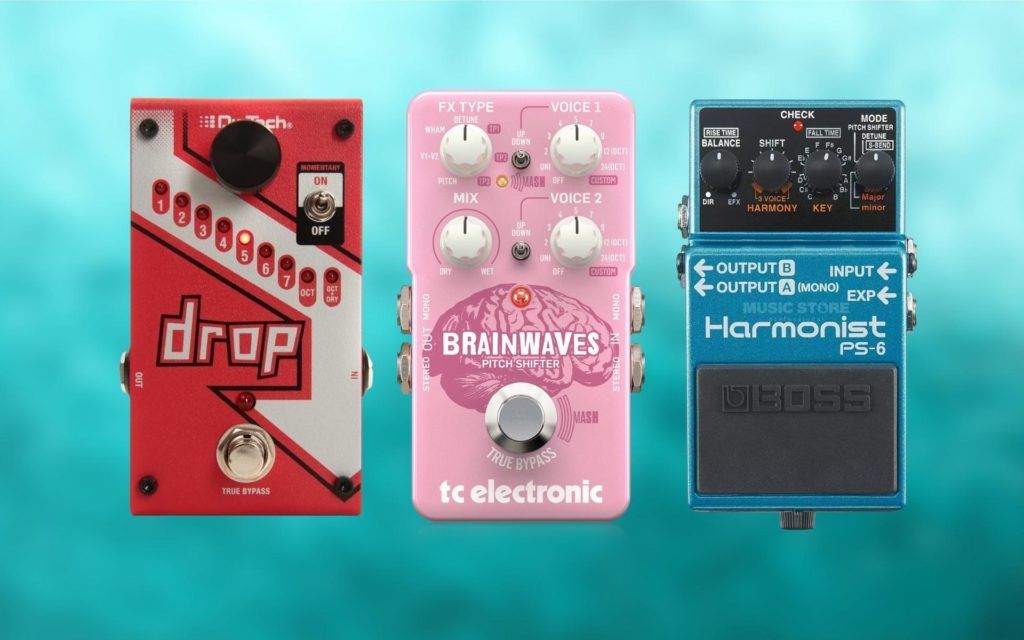We review products independently and our recommendations are genuine. If you purchase through links on our site, we may earn an affiliate commission. Learn More
The Fender Deluxe Reverb is an excellent-sounding amp to pair with an overdrive pedal. Renowned for its smooth, warm tone, this amplifier is compatible with a range of guitar playing styles.
Since it was first released in 1963, the Fender Deluxe Reverb has continuously ranked amongst the best-selling tube guitar amplifiers in the world.
Another standout quality of the Deluxe Reverb is its compatibility with gain-based effects, such as overdrive pedals. With so many overdrive pedals available to guitarists, choosing the ideal one isn’t an easy task.
In this guide, we’ve narrowed down the search and identified the best overdrive pedals for guitarists who use a Fender Deluxe Reverb.
In a Rush’ Round-Up
How We Tested
To get an accurate idea of the capabilities of these overdrive pedals, we tested them in a variety of ways. Firstly, we analyzed the way they sounded when played through several versions of Fender’s Deluxe Reverb amplifier and using different electric guitars.
Then, we tested the pedal’s ability to push a tube amplifier into saturation, before taking note of the controls installed on the device and whether they are effective. You can find the results of these tests in the reviews of the best Fender Delux overdrive pedals below.
Overdrive Pedals for Fender Deluxe Reverb Reviews
DOD Looking Glass Overdrive Pedal
DOD Looking Glass Overdrive Pedal Review
The DOD Looking Glass Overdrive Pedal is clearly designed with meticulous attention to detail, and it offers a wide range of tonal possibilities that make it a versatile tool for any guitarist.
One of the standout features of the Looking Glass is the high/low gain switch, combined with the standard gain knob. This combination allows for precise control over the level of overdrive, making it suitable for a variety of playing styles.
Whether I’m looking for a subtle low-gain boost to enhance my clean tones or craving aggressive distortion for a high-energy solo, the Looking Glass delivers with finesse. It’s remarkable how a single pedal can cover such a wide gain spectrum.
The input filter control is another aspect that I found particularly valuable. It lets me shape the tone as it enters the pedal, allowing me to customize the sound to match my guitar and amplifier setup. This level of flexibility ensures that the Looking Glass can adapt to any musical genre or playing situation.
The bass and treble cut controls further enhance the pedal’s versatility. I’ve found that these adjustments can dramatically affect the pedal’s response, allowing me to sculpt my tone with precision. It’s not just an overdrive pedal; it’s a powerful tone-shaping tool that can transform my sound in a meaningful way.
The internal buffer selector is a hidden gem in the Looking Glass. This feature lets me optimize the pedal’s placement in my pedalboard, ensuring that it works seamlessly with the other pedals in my signal chain. It’s a testament to the thoughtfulness put into the pedal’s design, making it a practical addition to any setup.
With its ability to replace multiple dirt boxes, the DOD Looking Glass Overdrive Pedal has earned its place as my go-to drive. It’s a testament to the outstanding craftsmanship and attention to detail that DOD and Shoe Pedals put into its creation.
Features:
- Input filter control
- Bass and treble cut
- High and low gain switch
Pros
- Internal buffer selector allows for flexibility
- Input filter gives you more tonal options
- Great sound and wide tonal range
Cons
- On the pricier side compared to other overdrives
MXR EVH 5150 Overdrive Pedal
MXR EVH 5150 Overdrive Pedal Review
Guitar legend Eddie Van Halen was renowned for his overdriven tones. This MXR EVH pedal was designed in collaboration with the late iconic guitarist and brings some of his signature tones into a stompbox format.
With a 3-band onboard EQ, you can tweak the frequency of the overdrive to suit the sound you’re aiming to create through your Deluxe Reverb. The controls are laid out intuitively, and the design isn’t overly complicated.
This pedal also benefits from having a built-in noise gate, which when active prevents noise issues from marring the overdrive effect. On the other side, you get a clean boost which is ideal for cutting through the mix when soloing.
The boost adds +6dB to your guitar signal instantaneously and therefore can be used to push the tubes of your Fender amp into warm saturation. Furthermore, true bypass switching ensures the integrity of your signal path and prevents the dreaded tonal suck that occurs as a result of poorly designed pedals.
Features:
- 3-band EQ controls
- True bypass switching
- Based on the EVH 5150 tube amp
Pros
- Reacts to the speed of your playing
- Ideal for warm overdriven rock tones
- Versatile controls
Cons
- Noticeably compresses a guitar’s output
Fender Pugilist Distortion & Overdrive Pedal
Fender Pugilist Distortion & Overdrive Pedal Review
Fender’s range of effects pedals is highly underrated in my opinion. Perhaps that’s due to most musicians knowing the brand for its impeccable range of guitars and amplifiers, such as the Deluxe Reverb.
The Fender Pugilist pedal offers a range of saturated tones that are highly compatible with tube amps. At the heart of the device are two gain stages, each of which is equipped with an individual tone parameter.
One of the standout qualities of this Fender pedal is its versatility. It can be used to add lots of gain to your signal, transforming the guitar into a fire-breathing monster. Alternatively, you can add subtle layers of overdrive to heat up your tone.
The combination of control knobs and switches makes this pedal extremely easy to operate. Once you become accustomed to the different modes, you can quickly adjust the settings to get the results you need during a song.
In typical Fender fashion, the Pugilist has several innovative features, including a convenient battery door which makes replacing the 9v battery fast and easy. There’s also an LED inside the chassis which makes the controls more visible.
Features
- Fender-designed drive circuit
- 2 onboard overdrive modes
- True bypass switching
Pros
- Designed for Fender amps like the Deluxe Reverb
- Blends distortion and overdrive
- Classic analog saturation
Cons
- This pedal is best suited to heavy rock and blues
JHS Morning Glory V4 Transparent Overdrive Pedal
JHS Morning Glory V4 Transparent Overdrive Pedal Review
Although the 4th version of the Morning Glory may look simple, it is capable of a surprisingly extensive range of sonic results.
The minimalistic three rotary control design covers all of the basics you need to tweak the overdrive effect. By adjusting the Drive and Tone controls, you can create aggressive overdrive or less intense saturation.
The feature which takes this pedal to the next level is the Gain switch. When activated, this control instantly injects power into the output, making the low-end frequencies sound much clearer.
Featuring an all-analog design, the Morning Glory V4 Pedal works perfectly with vintage-style amps and therefore could be the best overdrive for Fender Deluxe Reverb players.
This pedal is incredibly easy to use. It proves that you don’t need an array of controls and parameters to create high-quality, overdriven tones that are perfect for rock guitar playing.
Features
- Transparent boost and overdrive modes
- Highpass filter tone control
- True bypass switching
Pros
- Simple controls
- Combines overdrive and boost effects
- Wide range of saturated tones
Cons
- Best suited to clean amp tones
Fulltone OCD Obsessive Compulsive Drive Pedal
Fulltone OCD Obsessive Compulsive Drive Pedal Review
Almost two decades since its initial release, the OCD by Fulltone continues to be one of the best-selling overdrive pedals on the market. The reason for its success is simple – it provides exceptional saturated tones that work across all styles and genres.
This particular model of OCD features some significant improvements to the original. Firstly, its output buffer has been reimagined to prevent loss of signal strength, which was one of the only criticisms of the earlier model.
Also, Fulltone has installed a Class A input which improves the way the pedal responds to the different dynamics of your playing.
It’s worth noting that this pedal can be used either in true bypass mode, or buffered mode. Therefore, you can decide which of these would be most beneficial for your particular effects rig.
The OCD is undeniably great for live performances, as it coats your guitar signal in red-hot overdrive. Additionally, it records immaculately, which is another reason for its popularity over the years.
Fender Deluxe Reverb amplifiers combine vintage and modern features, which is one of the main reasons they’re so versatile. The OCD also boasts this quality, making it an ideal choice for supplying gain to the amplifier.
Features
- Class-A JFET input section
- Two onboard gain settings
- Enhanced bypass switching
Pros
- Retains note definition
- Great for cutting through the mix when soloing
- Increases sustain
Cons
- Can sound muddy when used with chords
Ibanez TS808 Original Tube Screamer Overdrive Pedal
Ibanez TS808 Original Tube Screamer Overdrive Pedal Review
The Ibanez TS808 Tube Screamer has long been a favorite amongst guitarists who want to add some smooth-sounding overdrive to their tone.
With its iconic retro, green design, the TS808 was popularized by none other than legendary blues guitarist Stevie Ray Vaughan. This reissue houses the same analog circuit and IC chip as the highly sought-after original.
The three controls included on this pedal are very easy to understand and use. Firstly, you can use the Overdrive knob to increase the amount of gain that is added to your signal. Then, the Level control is used to balance the pedal with your Deluxe Reverb amp’s volume.
The Tone control is arguably the most pivotal of the three, as it adjusts the prominent frequencies of the overdrive effect. You can crank this control up to enjoy fat-sounding saturation, or pull it down to make the effect more understated.
Features
- Analog overdrive effect
- Based on the iconic original Tube Screamer
- Tone, Overdrive, and Level controls
Pros
- Easy to use controls
- Warm, analog overdrive tone
- Pushes a tube amp into saturation with ease
Cons
- A limited number of controls
Overdrive Pedals for Fender Deluxe Reverb Buyer's Guide
A Fender tube amplifier’s sound, look, and performance simply cannot be replicated. The Deluxe Reverb is one of the iconic American brand’s most famous amplifiers, and it sounds incredible when overdriven.
Choosing an overdrive pedal can be tricky these days, as there is an abundance of great options out there. The Deluxe Reverb demands a specific type of overdrive pedal that can enhance its natural qualities.
Some overdrive pedals allow you to tweak more aspects of the sound to get the perfect tone from your Deluxe Reverb, while others are more simplistic in design, which may appeal to some people.
Having an idea of the overdriven tone you’d like to achieve from your Deluxe Reverb will help[ you to narrow down your search based on what each pedal can offer.
We’ll help you to do this by pointing out some of the vital considerations that need to be made in the remaining sections of this guide.
Things to Consider When Buying Overdrive Pedals
Consider bypass switching
How an overdrive pedal sounds through your Fender Deluxe Reverb is affected by whether it uses true bypass or buffered switching. If you have an extensive pedal selection, it is better to use a buffered overdrive to promote consistent signal strength. For smaller signal chains, true bypass will work just fine.
Think about tonal controls
Overdrive dramatically changes how your Deluxe Reverb amp sounds, so having EQ controls or filters installed on the pedal will allow you to precisely shape your tone.
Consider whether you need a gate
Some overdrive pedals have a built-in noise gate, which prevents annoying humming or buzzing sounds from being transmitted to your Deluxe Reverb when the gain is cranked up.
Look out for connectivity
If you’d like to use your overdrive pedal to split your guitar’s signal, you’ll need one with both wet and dry outputs.
How To Choose an Overdrive for Your Fender Deluxe Reverb
The Deluxe Reverb is such an excellent amplifier that you probably feel obliged to pair it with only the finest overdrive pedal. This is a wise move – as the overdrive pedal needs to interact with the various power tubes installed in the am,p.
Overdrive is one of the most commonly produced effects because it’s straightforward to create the circuit. However, it’s difficult to perfect the saturated tone.
The Reverb Deluxe is renowned for its warm, vintage-style tone with a rich low-end, prominent midrange, and glassy highs. Therefore, you need an overdrive pedal that doesn’t neglect any of the frequencies of the amplifier.
Rather than looking for an overdrive specifically for dark or brighter sounds, I’d recommend choosing one equally focused on the entire frequency response.
This will ensure that none of the rich tones from the Deluxe Reverb’s speakers are compromised when you stomp on the footswitch of your new overdrive pedal and crank up the gain.
Best Overdrive Pedal Settings for Deluxe Reverb
Tube amplifiers like the Fender Deluxe Reverb naturally produce overdrive when you add gain to the signal, causing saturation. The reason that you want to use an overdrive pedal with the amp is so that you can control the tube break-ups.
Using the controls on the pedal with the controls installed on the Fender Deluxe Reverb gives you the ability to shape your overdriven tone precisely.
There are several benefits to using a minimalistic overdrive pedal with a Fender Deluxe Reverb, as opposed to using one crammed with different adjustable knobs and switches.
Rather than changing the sound of the tube overdrive that the amplifier already produces, it’s better to enhance it and gain the ability to trigger it without needing to increase your volume too much.
All that is required is a control for adjusting the amount of gain, which all overdrive pedals should include, and some form of EQ.
The pedal may have independent controls for adding more low, midrange, and higher frequencies, or you can do this using the controls on the amp.
Alternatively, you might find that the pedal has a control labeled “tone,” which changes the prominent frequencies of the overdrive.
Signal Chain Placement & Pedal Compatibility
An overdrive pedal is likely to be one of the most frequently used effects in your signal chain, so you must place it in the optimal position. This will differ for every guitarist, depending on your other pedals.
Overdrive is most commonly positioned after dynamic pedals, like compressors and EQ devices toward the front of the signal chain. However, you might want to experiment with using it further in the signal chain to create less conventional tones.
Overdrive Pedals for Fender Deluxe Reverb FAQs
Is Overdrive The Same as Boost?
Overdrive pedals belong to the same family of effects as boost, distortion, and fuzz pedals. Each of these effects adds a certain amount of gain to the signal to change the way it sounds, but they do so to varying degrees.
An overdrive pedal adds considerable gain to the signal to make it sound more saturated. A boost pedal adds enough to increase the volume of the signal without causing it to distort too much.
Can You Use Overdrive and Distortion Together?
Due to the similarities between overdrive and distortion pedals, many guitarists believe that you cannot use these two gain-based effects together. However, this is simply not true – you can create some huge-sounding tones by stacking these pedals.
Overdrive and distortion may both work by increasing gain, but they add different levels of coloration and tonal alterations, which can complement each other when they are used simultaneously.
How Do I Get Overdrive From a Fender Deluxe Reverb Without a Pedal?
Using an overdrive pedal is the easiest way to push a Fender Deluxe Reverb amplifier into saturation. Still, you can also use the old-school method of simply cranking up the amp’s volume.
Once you reach the amp’s headroom limit, the tubes will be pushed into overdrive, and you’ll hear the warm, vintage beauty of the Deluxe Reverb.

